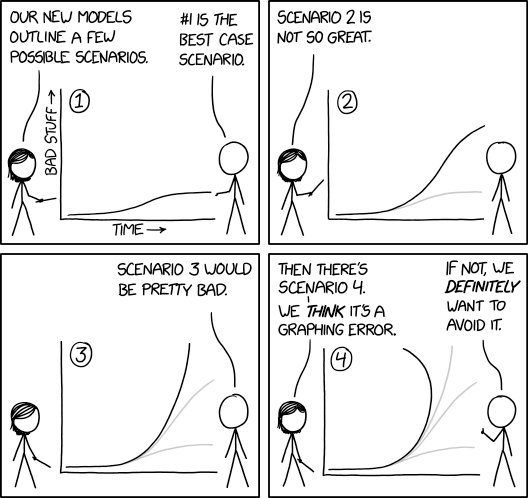Big Chico Creek: Revisited: “During the past summer, FISHBIO revisited CSU Chico’s Big Chico Creek Ecological Reserve for the fourth time since 2013 to survey the creek’s summertime trout population. The Reserve provides a nearly 4,000-acre extension adjacent to Chico’s Upper Bidwell Park, creating an uninterrupted corridor of protected land flanking the creek. The creek is home to resident rainbow trout as well as steelhead, the ocean-going form of the species. The latter has been in decline in California and elsewhere, and is currently listed as “Threatened” under the Endangered Species Act. While our surveys don’t necessarily allow us to evaluate the abundance of the ocean-going life history form, the juveniles of rainbow trout and steelhead comingle, and trends in their combined abundance can provide insights about the condition of the overall fish population – in this case, indicating a bounce back to pre-drought numbers. ... ” Read more from FishBio here: Big Chico Creek: Revisited
West Coast salmon fishing and Southern Residents: “Southern Resident killer whales have long pursued the biggest and most nourishing Chinook salmon from coastal Pacific waters. Chinook salmon fishing is also a mainstay of the West Coast economy, generating nearly $72 million in income last year. Is there room for both? The answer is yes, with safeguards. NOAA Fisheries prioritizes the needs of Southern Residents in setting salmon fishing seasons, as the Endangered Species Act requires. We also recognize the importance of salmon fisheries to port communities up and down the West Coast, as outlined by laws including the Magnuson Stevens Act. We are working with states, tribes, and the Pacific Fishery Management Council (Council). We are examining in detail how West Coast fisheries affect prey for the Southern Residents. So far, the analysis has indicated that Council fisheries have been taking a small proportion of the available Chinook salmon each year. … ” Read more from NOAA here: West Coast Salmon Fishing and Southern Residents, Part 1, Part 2
How do you study microfibers? Get creative: “Three years ago, Dimitri Deheyn noticed intensely blue stringy shapes as he examined jellyfish samples through a microscope in his marine biology lab at the Scripps Institution of Oceanography at the University of California, San Diego. He assumed his lens was dirty, so he wiped it off with a special cloth. Then he tried taking it apart and airbrushing the optics. But the particles kept showing up. At first, Dr. Deheyn thought the culprit might be microplastics, tiny plastic bits that have invaded the oceans in the past decade. But a quick literature search revealed that the stringy shapes, each about a fifth as wide as a strand of hair, were actually microfibers from fabric. ... ” Read more from the New York Times here: How do you study microfibers? Get creative
Removing the novel coronavirus from the water cycle: “Scientists know that coronaviruses, including the SARS-CoV-2 virus responsible for the COVID-19 pandemic, can remain infectious for days — or even longer — in sewage and drinking water. Two researchers, Haizhou Liu, an associate professor of chemical and environmental engineering at the University of California, Riverside; and Professor Vincenzo Naddeo, director of the Sanitary Environmental Engineering Division at the University of Salerno, have called for more testing to determine whether water treatment methods are effective in killing SARS-CoV-19 and coronaviruses in general. … ” Read more from UC Riverside here: Removing the novel coronavirus from the water cycle
NASA study adds a pinch of salt to El Niño models: “When modeling the El Niño-Southern Oscillation (ENSO) ocean-climate cycle, adding satellite sea surface salinity — or saltiness — data significantly improves model accuracy, according to a new NASA study. ENSO is an irregular cycle of warm and cold climate events called El Niño and La Niña. In normal years, strong easterly trade winds blow from the Americas toward southeast Asia, but in an El Niño year, those winds are reduced and sometimes even reversed. Warm water that was “piled up” in the western Pacific flows back toward the Americas, changing atmospheric pressure and moisture to produce droughts in Asia and more frequent storms and floods in the Americas. The reverse pattern is called a La Niña, in which the ocean in the eastern Pacific is cooler than normal. … ” Read more from NASA here: NASA study adds a pinch of salt to El Niño models
Show with the flow: elevation maps reveal world rivers: “These maps of rivers around the world were created by Esri UK, a mapping and spatial analytics company, from detailed elevation data collected using remote sensing techniques. The information was taken from Esri’s Living Atlas, one of the world’s largest collections of geographic information. By eliminating any vegetation or infrastructure, the maps show each river’s geomorphology as it would appear on bare ground. Elevation data can be valuable in highlighting river features and landforms that cannot be seen from normal satellite images, such as slight changes in elevation, run-off, levees, sediment deposits and how the land has changed over time. … ” Check it out at the Guardian here: Show with the flow: elevation maps reveal world rivers
About Science News and Reports: This weekly feature, posted every Thursday, is a collection of the latest scientific research and reports with a focus on relevant issues to the Delta and to California water, although other issues such as climate change are sometimes included. Do you have an item to be included here? Submissions of relevant research and other materials is welcome. Email Maven




